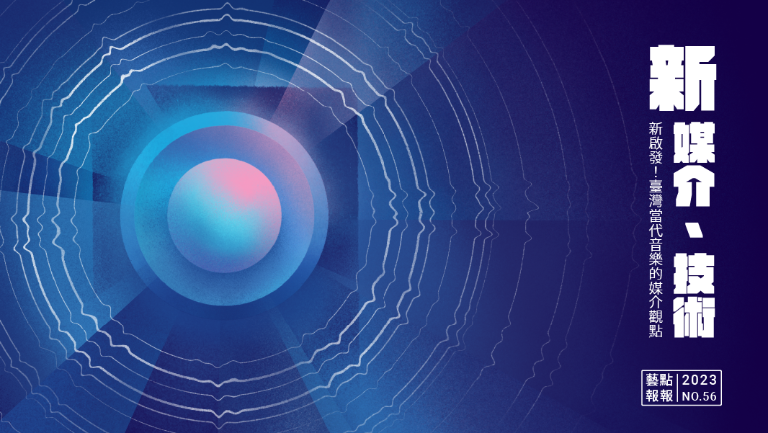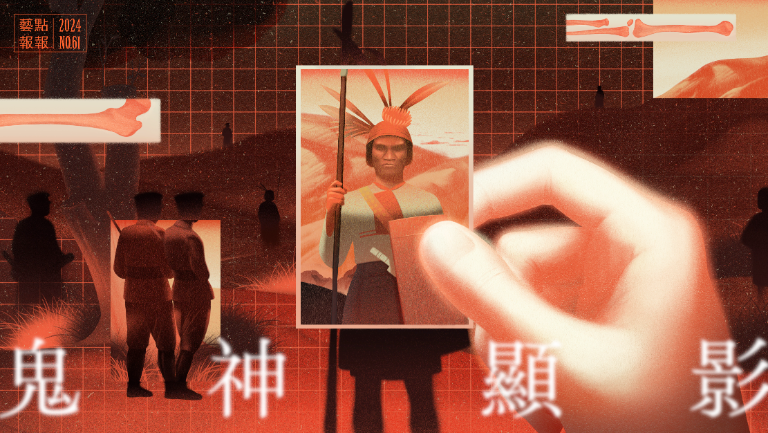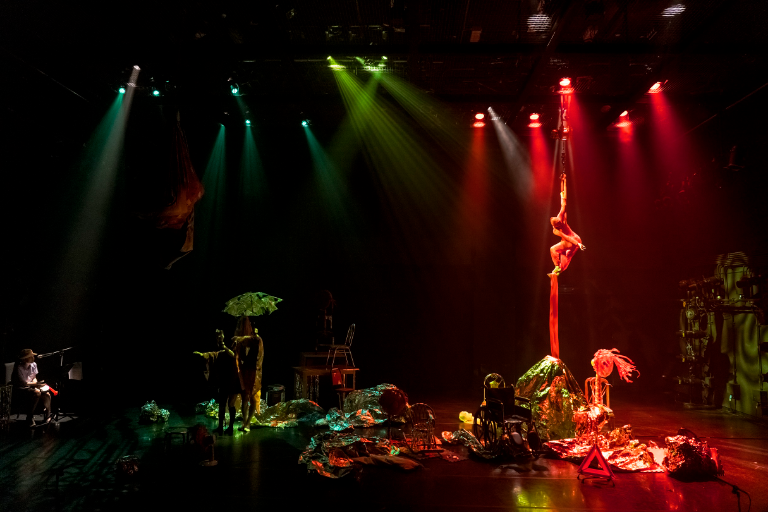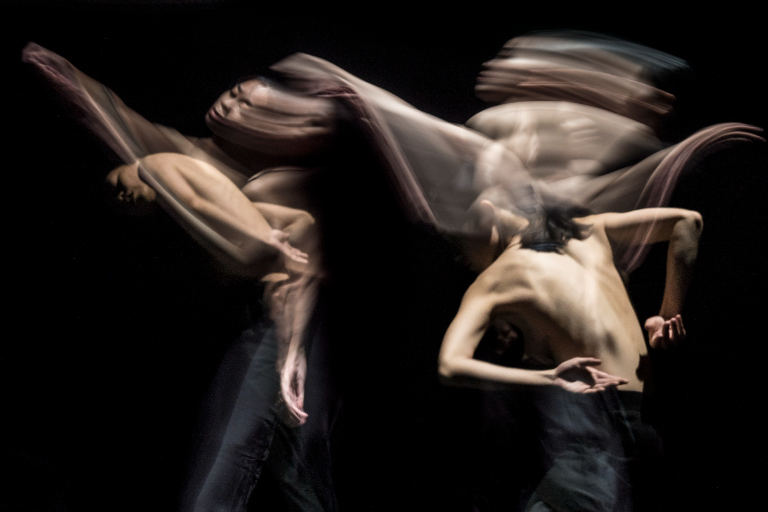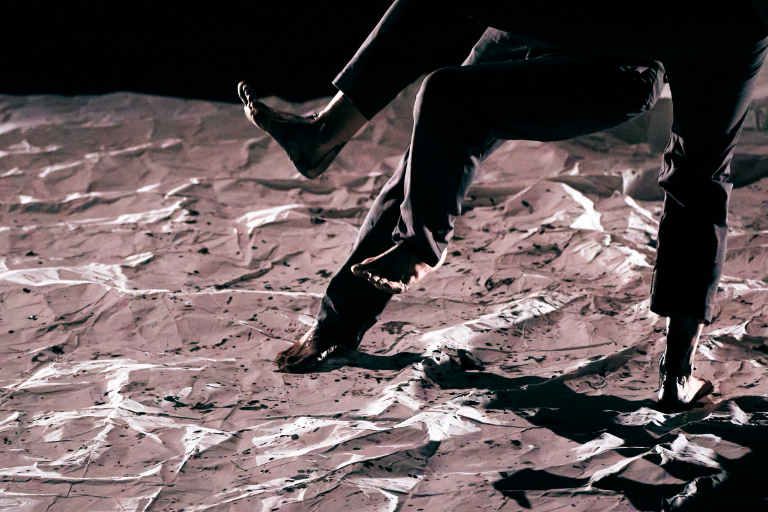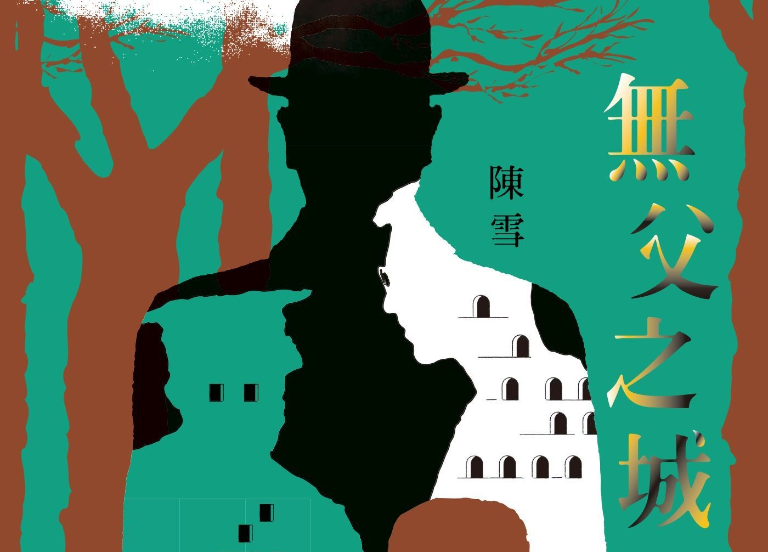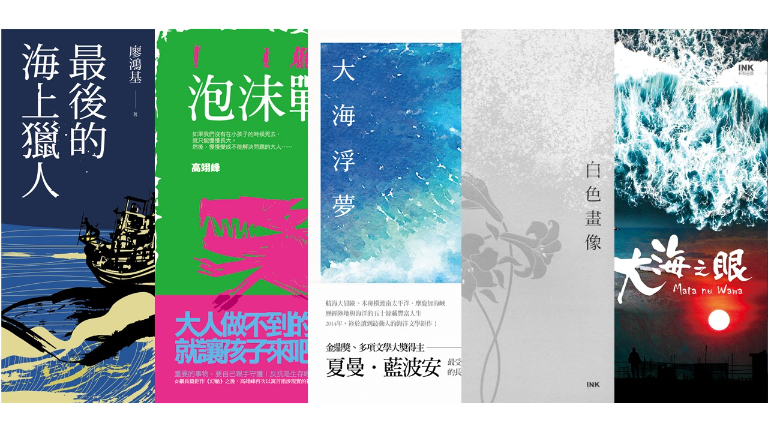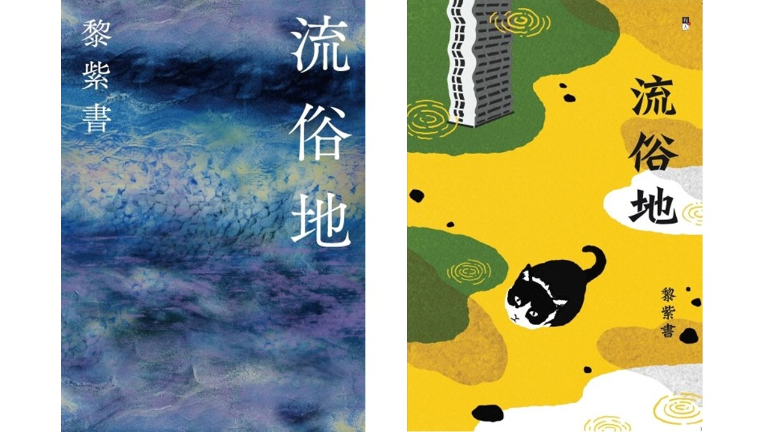Article | OUTLOOK
Building a Friendlier Environment for Taiwanese Composers—Overview of Current Developments in Contemporary Music in Taiwan
Renowned US composer Milton Babbitt (1916-2011) published the article "Who Cares if You Listen?" (originally titled by Babbitt as "The Composer as Specialist") in 1958—a staple piece of literature among the US music circle and must-read for academic composers. In his text, Babbitt meticulously details the difficulties faced by "new" or contemporary music at the time, stating his personal opinions on how composers should respond and solve these issues. From the article, we can first notice the relative conservatism of early US society, where the majority of people were unable to understand or unwilling to accept contemporary music. Post-World War II composers were eager to experiment with novel creative techniques in response to shifts in aesthetics and philosophy, gradually straying away from the familiar language of classical music. In addition to doing away with essential elements of classical music like melody, tonality, tonal harmony, or form, composers were increasingly guided by different values in their creation: instead of focusing on entertainment or other functional purposes, they laid a stronger emphasis on the evolution and development of musical language. The kind of music developed with this mindset would inevitably undergo a harsh period of shun and misunderstanding. Not only is it unintelligible and dull for the regular listener of classical music, but even most performers who have undergone classical training deem this kind of music abstract and puzzling, with overly-complicated rhythms and overdemanding performance techniques. While some say it is simply disagreeable to the ears, others refuse to play this kind of music straightaway out of unexplainable fear or horror, among other reasons. Babbitt expresses his viewpoint in the article that this situation where the general public fails to understand and even despises such music is entirely normal, and this might not even be a bad thing. He further elaborates on the necessity for the existence and nourishing of such music, pointing out that a composer's creative work falls under the scope of professional research. Composers must neither cede to the tastes and habits of laypeople, nor be influenced by the worldly market mechanism. He also gives academic composers some advice on how to survive. His belief is that universities, conservatories, and other higher education institutions have the responsibility and duty to support and shelter these composer's works. In addition to offering them a teaching job, these institutions must serve as an environment for free academic creation and research, shielding their musical language from being contaminated by popular taste or box-office pressure and enabling music to continue evolving and developing robustly, without restraint.The phenomenon voiced in this article is not exclusive to US society: certain European nations began facing the impact and influence of contemporary music earlier than the US did. This is an issue the whole world needs to tackle. By this point, perhaps some readers are wondering if reception of contemporary music has improved over half a century since said article's publication. Is contemporary music still the scorn of our society that neither musicians are willing to perform nor listeners able to enjoy? Or has it gone extinct amidst the disapproval and rejection by performers and listeners alike? Compared to these questions, it might be even more pertinent for us to inquire the current status of contemporary music in Taiwan. Have Taiwanese people experienced the same problems in regards to contemporary music described by Babbitt in his article? Have these problems affected Taiwan's overall music ecosystem and, particularly, the creation and dissemination of works by Taiwanese composers? Before giving answers to the above, let's first turn to several breakthroughs in Europe's contemporary music scene across the past few decades. The observations stated below might serve as a point of reference for us.Firstly, from the earliest festivals dedicated to cultivate contemporary music to those spread out worldwide today, it is evident that such events have become major occasions for musicians and the general public interested in the genre. Other than concert performances, certain festivals also organize forums, academic seminars, workshops, master classes, or other educational activities. For instance, held since 1921 until today, Germany's Donaueschingen Musiktage is often considered the oldest new music festival in the world. It has served to launch the careers of a myriad of major 20th and 21st-century composers. Another contemporary music festival holding equal prestige is the ISCM World Music Days organized by the International Society for Contemporary Music (ISCM), which was originally created in Salzburg, Austria in 1923 as the Internationale Gesellschaft für Neue Musik. This festival has been held uninterruptedly since then, with each ISCM member country taking turns to host the festival annually. Other renowned international new music festivals include the Biennale Musica (1930-) in Italy; Darmstädter Ferienkurse (1946-) in Germany; Ojai Music Festival (1947-) in the US; Gaudeaumus Festival (1951-) in the Netherlands; Warsaw Autumn (1956-) in Poland; Cabrillo Festival of Contemporary Music (1963-) in the US; Wittener Tage für neue Kammermusik (1969-) in Germany; Rencontres internationales de musique contemporaine (1972-1992) in France; Festival d'Automne à Paris (1972-) in France; Asian Composers League Conference and Festival (1973-); Huddersfield Contemporary Music Festival (1978-) in the UK; Festival of New American Music (1978-) in the US; ECLAT Festival Neue Musik (1980-) in Germany; Wien Modern (1988-) in Austria; and ULTIMA Oslo Contemporary Music Festival (1991-) in Norway, among others. This has even prompted a wave of new music festivals emerging across Western educational institutions. Merely in the year 2023-2024 in the US alone, the Indiana State University held its 57th Contemporary Music Festival; Ball State University held its 53rd Annual Pellegrini Festival of New Music; State University of New York at Buffalo held its 46th June in Buffalo Festival; California State University in Sacramento held its 46th Festival of New American Music; Bowling Green State University held its 44th New Music Festival; James Madison University held its 42nd Contemporary Music Festival; California State University in Fullerton held its 23rd Annual New Music Series; Florida State University held its 20th biennial Festival of New Music; Illinois State University held its 16th RED NOTE New Music Festival; and University of Missouri held its 14th Mizzou International Composers Festival, to name a few examples.Secondly, professional music ensembles specializing in contemporary works have been sprouting and growing at an incredible pace worldwide. This surge has thoroughly influenced the development and status of contemporary music in our time, even shifting the overall landscape of serious music. The Ensemble intercontemporain is a prestigious Paris-based ensemble devoted to contemporary music. It is not the first music ensemble focusing on contemporary music performance in the world, but it easily ranks as one of the most important and active ones. With the support of the French Ministry of Culture, it was founded in 1976 by composer and conductor Pierre Boulez, a dominant figure in the contemporary music world. It is currently composed of 31 professional instrumentalists who can be considered the foremost authorities on contemporary music performance. Not only do they hold around 30 contemporary music concerts in Paris every year, but they also tour French cities and frequently perform in major contemporary music festivals worldwide. In addition to their chief duty of playing music, they often collaborate with different musical or educational institutions to cultivate and train young students in contemporary music composition, conducting, and performance. They have, for instance, a long-standing collaborative relationship with the Conservatoire National Supérieur de Musique et de Danse de Paris. Activities they engage in together include performing alongside the student orchestra, holding workshops for student composers and performers, and even performing works written by composition students in the conservatory.As for other contemporary music ensembles in the world, a Wikipedia search currently yields more than 160 results. Below are some of the most renowned ones that also have the longest history (established before 1990): Group for Contemporary Music (1962) in the US; Les Percussions de Strasbourg (1962) in France; Ensemble Ars Nova (1963) in France; Asko|Schönberg (1965) in the Netherlands; London Sinfonietta (1968) in the UK; Da Capo Chamber Players (1970) in the US; Speculum Musicae (1971) in the US; Ensemble 2e2m (1972) in France; Ensemble l'Itinéraire (1973) in France; Arditti String Quartet (1974) in the UK; New York New Music Ensemble (1976) in the US; Concorde Contemporary Music Ensemble (1976) in Ireland; Divertimento Ensemble (1977) in Italy; Ensemble Contrechamps (1977) in Switzerland; Ensemble Modern (1980) in Germany; Musikfabrik (1980) in Germany; Xenakis Ensemble (1980) and Nieuw Ensemble (1980) in the Netherlands; California EAR Unit (1981) in the US; Ensemble Aleph (1983) in France; Ensemble Recherche (1985) in Germany; ELISION Ensemble (1986) in Australia; Oslo Sinfonietta (1986) in Norway; Continuum (1987) in Canada; Kammerensemble Neue Musik Berlin (1988) in Germany; Klangforum Wien (1989) in Austria; and Nouvel Ensemble Moderne (1989) in Canada. As for similar ensembles founded after 1990, there are simply too many to name.Thirdly, numerous higher music education institutions around the globe have established ensembles for contemporary music or new music performance courses in their programs, making such training an essential part of their overall music education. Only taking the US as an example, schools with new music ensembles or contemporary music performance courses have perhaps long surpassed those that don’t in number; there is therefore no need to list individual examples here.An even more significant change is the increasing number of schools that have begun to offer academic degrees or programs focusing on contemporary music performance. This enables young students with an interest in contemporary music to hone in on the genre. For instance, Germany's Ensemble Modern has had a long-standing collaboration with the Frankfurt University of Music and Performing Arts. The International Ensemble Modern Academy (IEMA) has been founded to offer one-year training in contemporary music performance, bestowing a master's degree on students upon their graduation from the program. The goal of this program is to teach contemporary music performance techniques, notation and interpretation of new music, enhance students' grasp of musical works' inner aesthetics, and deliver a well-rounded understanding of the 20th- and 21st-century musical repertoire. As for the Manhattan School of Music in the US, it offers similar training via a Contemporary Performance Program. It is a tailor-made program for contemporary music performers that encompasses individual mentoring, ensemble practice, opportunities of collaboration with composers, and participation in concerts with the program's ensemble, Tactus. The City of Basel Music Academy's Hochschule für Musik also has a two-year Master's degree in Contemporary Music Performance. In addition to helping students build performance techniques necessary for playing contemporary music, it also includes courses in theory, dissemination, and marketing, with an emphasis on collaboration and cross-disciplinary practices. Students play alongside Zone Expérimentale Basel, the program's contemporary music ensemble, perform in music festivals in both Switzerland and abroad, and are able to participate in workshops, seminars, master classes, as well as discussions led by contemporary music experts and guest lecturers.Fourthly, many countries have established their own centers for contemporary music to help promote the genre as well as to assist with the building and preservation of contemporary composers’ databases. Needless to say, this involves the collection of contemporary music scores and audio/video recordings. Taking the French organization Centre de documentation de la musique contemporaine established in 1977 as an example, it is far more than just a research center for music composition; it is also a bridge between composers, performers, as well as ensembles and other performance institutions. Other than regularly hosting seminars and other conferences to enable exchanges between composers, performers, and other professionals, it is also home to a massive collection of contemporary music documents, including published and unpublished scores, videos, books, periodicals, research papers, dissertations, and other music-related textual records and composer’s biographical documents. It even has a free open area where anyone can access music scores and listen to recordings on collection. They also make available plenty of announcements and other information related to contemporary music via the Internet and e-mail, such as a contemporary music event calendar, composition competitions, calls for scores, contemporary composers' bios, and transcriptions of conferences held at the center.Some higher education institutions have also begun to establish contemporary music centers of their own. Although they can't possibly compare to the scope of national centers, they are nevertheless great contributors to the creation, performance, and research of contemporary music. Turning to the US once again, the State University of New York at Buffalo has the Center for 21st Century Music that stands out for its wealth of resources, including the school's renowned June at Buffalo Festival, the Slee Sinfonietta Concert Series, various guest artist events, coupled with other performances, lectures, and seminars. Founded in 2006, it is dedicated to the composition and production of new musical works, with the goal of fostering and perpetuating awareness, research, and performance of contemporary music. Other educational institutions with comparable organizations include the University of Chicago with its Chicago Center for Contemporary Composition; Columbia University with its Fritz Reiner Center for Contemporary Music; University of Iowa with its Center for New Music; Bowling Green State University with its MidAmerican Center for Contemporary Music; Boston University with its Center for New Music; and Mills College at Northeastern University with its Center for Contemporary Music, among others.Fifthly, professional contemporary music ensembles collaborating with higher music education institutions have become quite commonplace, accelerating the transmission of relevant professional skills to the younger generation. This also facilitates more connections between students and external professional ensembles or individual performers, even opening up future opportunities for the former. This is most often done through an invitation extended to a professional ensemble from the hosting institution to perform in their music festivals or concerts, demonstration lectures, workshops for composers or performers, and even readings, rehearsals or performances of student compositions. Contemporary music ensembles of this kind engage in residencies of varying lengths, during which they interact with school students. They can either serve as workshop mentors for an afternoon, act as a week-long ensemble-in-residence for a music festival, or stay for as long as one semester or an entire academic year. The State University of New York at Buffalo is worth mentioning as an example, as it has invited a multitude of renowned contemporary music ensembles for residency, including the French Ensemble InterContemporain, Ensemble Court-Circuit, Les Percussions de Strasbourg, Ensemble Linea, and HANATSUmiroir; Ensemble SurPlus from Germany; Nieuw Ensemble from the Netherlands; Arditti Quartet from the UK, ELISION Ensemble from Australia; Nouvel Ensemble Moderne from Canada; and several US ensembles such as Ensemble Signal, Ensemble Mise-En, JACK Quartet, Mivos Quartet, Talujon, Talea Ensemble, Ensemble Dal Niente, New York New Music Ensemble, and Meridian Arts Ensemble.Sixthly, outside of academic institutions mentioned above, there is also a growing trend of contemporary music academies organized and run by non-academic institutions. Their goal is to provide short-term professional training courses as well as rehearsal and performance opportunities of contemporary music for young composers and performers. The Lucerne Festival Academy in Switzerland exemplifies this perfectly. It has taken place for many years, and continues to pride in being a "school of new music and laboratory for the future". Founded since 2004, the academy takes place every summer and sees a team of leading composers and performers in the domain of contemporary music gathering for several weeks to coach and guide nearly 100 talented young musicians in playing and discussing 20th and 21st century musical repertoire through rehearsals and seminars. Another famous example is Austria's Impuls International Ensemble and Composers Academy for Contemporary Music, which is preparing to enter its 14th edition in 2025 after 13 years of history. Young instrumentalists and composers from Austria and other countries participate in two-week courses at the academy to receive instruction and guidance on contemporary music theory and practices. A final example in this category is the Yarn/Wire International Institute organized by the US ensemble Yarn/Wire, composed of two pianists and two percussionists. Every year since 2016, they have hosted numerous instrumentalists and composers from around the world. Led by both invited composition and performance mentors, attending student composers and performers jointly participate in rehearsals, performances, lectures, seminars, and other educational activities, culminating in the premiere of these student composers' works played by peer performance students.Finally, in regards to more recent developments in contemporary music overseas, the author has observed a new trend where an increasing number of individual ensembles are choosing to combine their resources and ensemble forces via joint commissions or joint performances. The aim is to interconnect different institutions to create more opportunities that benefit both composers and performers alike. The establishment of the Ulysses Network is an iconic success story. Founded in 2012, this network currently comprises 11 preeminent contemporary music organizations from 9 European countries: IRCAM (France), Divertimento Ensemble (Italy), Gaudeamus Foundation (Netherlands), Hochschule für Musik und Theater Hamburg (Germany), International Ensemble Modern Academy (Germany), Impuls Festival (Austria), Festival Mixtur (Spain), Royaumont Foundation (France), ULTIMA Oslo Contemporary Music Festival (Norway), Time of Music (Musiikin aika) Festival (Finland), and Warszawska Jesień (Poland). The Ulysses Network project has previously gone through two phases: May 2012 to April 2016 and June 2016 to October 2020. It is currently in its 3rd phase, going from October 2020 to September 2024. The project has yielded numerous commissioned works and collaborative concerts throughout its stages. It has also resulted in the establishment of the Ulysses Platform as well as providing cross-national opportunities for young composers and performers. The Ulysses Ensemble is especially noteworthy. Starting in 2017, the Ulysses Network has chosen European-based young musicians through an open call to form a brand-new contemporary music ensemble every year under the name Ulysses Ensemble, and tour across member institutions and festivals. It not only shines the spotlight on composers, but also channels Ulysses Platform's efforts towards providing instruction and performance opportunities for young instrumentalists.The information above is an attempt to give our readers a general understanding of the development and current state of contemporary music in the West. We can now turn to the status of contemporary music in Taiwan to ponder the questions below regarding creation and performance of works by contemporary Taiwanese composers: 1. Do Taiwanese composers possess a robust and free environment for musical creation? 2. Are there sufficient opportunities and channels for performance of works by Taiwanese composers? 3. What is the attitude of our performers and listeners towards contemporary Taiwanese compositions and other contemporary music? 4. What is our progress in terms of education, training, and dissemination of contemporary music in Taiwan? 5. Is there anything we can learn from the system of education and training in the area of contemporary music in the west? Contemporary music was gradually introduced to Taiwan by Taiwanese composers and performers returning from their studies abroad. Organizations aimed at performing and promoting works by Taiwanese composers have been progressively established by numerous predecessors such as Chang-Hui Hsu, Shui-Long Ma, Mao-Shuen Chen, Mau-Liang Chen, Chin-Tang Shen, Chang-Fa Yu, Deh-Ho Lai, Po-Yun Hsu, Loong-Hsing Wen, and Hwang-Long Pan...etc. These organizations may vary in nature, scope, operating model, and level of activity, but they have brought about certain mitigation to the lack of performance opportunities for composers that had plagued the early Taiwanese composing scene. Some examples are the Music Creation Society (製樂小集) and Society for Debuting New Music (新樂初奏) founded in 1961, Jiang Lang Music Group (江浪樂集) founded in 1962, Sunflower Music Assembly (向日葵樂會) founded in 1965, Asian Composers League (亞洲作曲家聯盟) founded in 1973, FORMUSICA (璇音雅集) founded in 1983, ISCM-Taiwan (現代音樂協會) founded in 1989, and Spring Autumn Music (春秋樂集) founded in 1991. These organizations have often been spearheaded by composers. While some of them have undergone name changes or even disappeared early on, others have remained valuable channels for performances of Taiwanese composers' works, such as the Asian Composers League Taiwan National Committee, ISCM-Taiwan, and FORMUSICA.Reformations in national policies regarding arts and culture have also had a far-reaching influence on the development of contemporary music in Taiwan. Starting from the establishment of the Council for Cultural Affairs, Executive Yuan (CCA) in 1981, then the addition of the National Culture and Arts Foundation (NCAF) in 1996, to the elevation of the CCA to the Ministry of Culture in 2012, various policies have been made and fine-tuned over the years to encourage and promote the creation and performance of new music by contemporary Taiwanese composers. Various grant programs have been established as a result to support and encourage grant-seeking performing arts organizations to participate more actively in the commissioning, performance, circulation, and documentation of contemporary Taiwanese works, further ameliorating the environment for the creation and performance of contemporary music in Taiwan.Performing arts organizations in Taiwan that consciously promote contemporary music began to emerge since the CCA period. They have had a major influence in the dissemination and evolution of contemporary music in Taiwan, simultaneously bolstering opportunities for contemporary Taiwanese composers greatly. One such organization is the Chai Found Music Workshop founded in 1991 by renowned Taiwanese huqin (spike fiddle) player Cheng-Ming Huang, who also serves as its artistic director and head. They base their works primarily on traditional Chinese instruments, while extending the actual musical language into the realm of contemporary music. This fosters learning and allows Taiwanese composers to compose for traditional instruments, giving rise to a new form of Guoyue (modernized form of traditional Chinese music). Their core mission of promoting and documenting works by Taiwanese composers is accomplished through concert performances, music score publications, and recording projects. Chai Found Music Workshop has received funding from NCAF ever since the CCA era and has also been selected several times as a Taiwan Outstanding Performing Arts Group by the Ministry of Culture. Other exceptional organization in the developing history of contemporary music in Taiwan is Forum Music, led by percussionist Bor-Nien Hsu. It includes the Forum Music Ensemble founded in 1996 and Forum Music Auditorium established in 1997. They have organized numerous contemporary music concerts, music camps, academic lectures, as well as co-organized multiple international music productions, acting as a major promoter of contemporary music in Taiwan. Their plentiful modern music forums make up some of the most precious shared memories for many Taiwanese composers. Other than stimulating the creation, performance, and discussion of contemporary music, Forum Music has also promoted the conservation and compilation of contemporary Taiwanese musical works in the form of audio recordings as a preparatory step to their ultimate goal: to build a center of documentation of contemporary music in Taiwan. Forum Music Ensemble was a CCA grant recipient several times since its inception, selected as an Outstanding Performing Arts Group by CCA. Nowadays, Forum Music leases its space to other organizations or individuals for concerts or lectures. Myriads of musical activities organized by Forum Music in its heyday now only exist deep in our most cherished memories. The Contemporary Chamber Orchestra Taipei (台北人室內樂團) founded by conductor Chun-Fung Lee also made great contributions to the Taiwanese music scene despite its relatively short existence, championing contemporary music from Taiwan and other countries through concert performances and commissions of new works. Other musical organizations in Taiwan comparable to the ones mentioned above that are equally dedicated to contemporary music have been far and few in between. Yet, judging from current concert scenes and the NCAF Online Grant Portfolio Archive, the number of Taiwanese performers and ensembles interested in performing contemporary music and particularly works by Taiwanese composers seem to be slowly on the rise. Some groups exemplifying this trend include the Counterpoint Ensemble, TimeArt Studio, Studio Acht, Little Giant Chinese Chamber Orchestra, 3 People Music, C-Camerata, PIPA-ensemble, Taipei Chamber Singers, Müller Chamber Choir, and Tabernacle Women's Choir...etc. All of these groups have been NCAF grant recipients over a long period of time.In addition to the aforementioned composer associations and music groups primarily focused on contemporary and Taiwanese musical works, a growing number of classical music ensembles and individuals are also joining the force to promote contemporary music and that by Taiwanese composers through their concert programming, composition competitions, calls for scores, commissions…etc. With more ample financial resources and possibly more visibility than most private organizations, national music performing centers or other music performing organizations funded by the government are often in a more advantageous position to reach a more diverse audience through wider publicity and to have more comprehensive and lasting impact on the society. Therefore, when these organizations decide to back contemporary music and especially that by contemporary Taiwanese composers, the effect could be far-reaching and long-lasting. Below are two known examples of this in recent years. First is the Innovation Series Music organized by the National Theater and Concert Hall (NTCH) for six consecutive years in between 2013-2018. Three curators—composer Fang-Yi Lin, harpist Shannon Shuen Chieh, and composer Ching-Wen Chao—took turns taking charge and brought their own distinctive viewpoints and programming to the table during their term. Their planning and leadership gathered skilled contemporary music performers and renowned new music ensembles from home and abroad, giving local audiences a chance to listen to contemporary master works as well as brand new pieces written by outstanding Taiwanese composer. Even though NTCH decided to merge the Innovation Series Drama, Innovation Series Dance, and Innovation Series Music into the NTCH Ideas Lab in 2019, the impact that the Innovation Series Music has left on Taiwanese melophiles is simply irreversible.The second example is the Weiwuying TIFA Contemporary Music Platform that was initiated in 2019. Under the supervision of Wen-Pin Chien, artistic director of the National Kaohsiung Center for the Arts (Weiwuying), this contemporary music platform was entrusted to composer Fang-Yi Lin as curator, with Studio Acht serving as the production team from 2019 to 2021. Its mission is "maximizing the potential of the national performance venue and promoting contemporary works to create an ongoing, sustainable environment for the music of Taiwan." Starting from 2022, the Contemporary Music Platform officially transformed into the Weiwuying International Music Festival, for which internationally-acclaimed composer Unsuk Chin was hired as artistic director. 2024 has seen the conclusion of the 3rd edition of this annual festival. The Weiwuying Contemporary Music Ensemble was formed especially for this festival, which performs there every year. In reality, the gestation of this ensemble began early on in the Weiwuying Contemporary Music Platform period under the mechanism Weiwuying Contemporary Musical Performance Training Workshop. Musicians enthusiastic about contemporary music playing were recruited and received special training under the guidance of the internationally acclaimed conductor Lin Liao. The goal of such training was to prepare these musicians to become the principal performing force for the Weiwuying Contemporary Music Platform. And these people did successfully turn into the core members of today's Weiwuying Contemporary Music Ensemble. Additionally, the music festival is also aimed at cultivating the next generation of Taiwanese composers. Talented young composers are chosen through a selection process for an opportunity to compose brand-new musical pieces to be premiered in the following year's Weiwuying International Music Festival. In addition to her roles as the artistic director and curator for the music festival, composer Unsuk Chin also shares her personal composition experience with the selected young composers through master classes and workshops.As already mentioned above, government-funded music performing organizations could be more influential due to their status in society. Consequentially it speaks volumes when they initiate music projects with a focus on contemporary composers and their creations. A great example of this is the National Taiwan Symphony Orchestra (NTSO), a long-term supporter of Taiwanese composers via a variety of activities. Not only have they organized the Conference on Musical Creation and Development (音樂創作與發展研討會) multiple times across the years, they have also initiated many opportunities for Taiwanese composers including various calls for scores, commissions, score publications, and composition competitions. The most well-known instance among these opportunities is probably their Music Composition Competition for young Taiwanese composers. Since 2008, NTSO has organized many open calls for musical works under CCA's project Musical Creation and Marketing Platform. All the competition finalists selected would have their pieces performed live by NTSO in a concert open to the public before the winning compositions are chosen and prizes awarded. In 2014, this competition was officially renamed to what is known to us today as the Young Composers Music Composition Competition. It is an understatement to say that numerous Taiwanese composers have benefited tremendously from the many events hosted by NTSO over the years.In the hopes of obtaining a better understanding of the current state of contemporary music in Taiwan, the author had interviewed several groups actively engaged in the creation and performance of contemporary music in Taiwan in recent years before started writing this article. The interviewees included the Asian Composers League Taiwan National Committee, International Society for Contemporary Music-Taiwan, Studio Acht, C-Camerata, TimeArt Studio, and 3 People Music. They shared their individual experiences and observations on promoting contemporary music in Taiwan, along with their views and advice. Below is a summary of their insights on such task. The aim for collecting and compiling these opinions and information is to achieve a sort of brainstorming effect, providing some perspectives and references for other individuals and groups interested in promoting contemporary music.First and foremost, the greatest challenge the majority of the interviewees encountered in promoting contemporary music in Taiwan has to do with box office related issues. The general public still feels intimidated by contemporary music, and tends to reject it as a result. The reasons for this could be manifold, and each organization tackles these issues in different way. Some deliberately program pieces that are more accessible to the public. In other words, they try to choose compositions that are not so avant-garde or hard to understand in order to attract more concertgoers. Others simply target professionals and composition students as their chief audience and let go of the laymen all together. These groups take the liberty in choosing their repertoires, which are often more experimental and aim to push boundaries. This latter’s attitude is in line with US composer Milton Babbitt's views mentioned earlier in this article: that music creation shouldn’t be influenced by marketing and ticket sales. Yet other groups deal with empty seats by way of guest invitations and complimentary tickets. While this doesn't reverse the poor sales revenue, at least their effort is seen by a larger audience. Of course, there are still those who choose to ignore or not overthink the box office problems and merely focus on their professional work and artistry. Secondly, limitations in concert programming choices contribute to another difficulty faced by some of these groups interviewed. One such limitation in the choice of repertoires results from a strategic decision that aligns with specific aesthetics based on marketing needs as already mentioned in the last paragraph. Another inherent limitation comes from the set instrumentation of an ensemble with regular participating musicians, which requires them to program pieces within the maximum number of musicians in the group. Yet another concert programming restriction comes directly from available budget. It is rarer to see larger contemporary ensemble pieces in Taiwan due to the difficulty in securing the necessary funding. As a result, Taiwanese composers have little opportunity to write larger ensemble pieces. Another aspect that could affect the programming choice is the relatively small pool of skilled contemporary music performers in Taiwan. For instance, very few brass players in Taiwan are willing to play contemporary music. As a result of this, brass instruments are often not listed as an option in a lot of calls for scores and unfortunately excluded in many concert plannings, which also contributes to the fact that Taiwanese composers rarely have the opportunity to write for brass instruments and such pieces almost never get featured in concert performances. Moreover, whether it’s linked to grant availability or used as an incentive for audience, premieres are favored over repeating existing repertoires in Taiwan's contemporary music scene. The indirect consequence of this leads to a strange phenomenon that a work's debut is often its only performance. The relative value and benefits of commissioning a work are significantly diminished if such piece is only heard once. Think of it: if Beethoven's 32 piano sonatas were only ever played by one or two pianists, would they still be the iconic classics we know today? A repertoire is built only through repeated performances of a work. It is even necessary for different musicians to play the same work in multiple concerts before the piece is considered truly established. Finally, some groups expressed the desire to commission works from overseas composers. On one hand, this would provide avenues of healthy competition between Taiwanese and foreign composers, accelerating growth. On the other hand, this can give Taiwanese ensembles more grounds for bartering with musicians from other countries when negotiating additional exchange opportunities for themselves, further deriving mutual benefits. However, this is impossible under current grant mechanisms in Taiwan.Each interviewee also shared their views and advice regarding different ways to promote contemporary music in Taiwan. Below is general summary. Firstly, certain interviewees recommended starting by fostering more interest in playing contemporary music, especially among younger performers. More specific game plans could involve forming youth ensembles under existing professional contemporary music ensembles, letting the veteran contemporary music players pass down their expertise to the young ones with an aim to cultivate the next generation of contemporary music experts. These contemporary music specialists could also take the lead in working with the youths in short-term workshops or summer music camps that are specifically designed for contemporary music, which could also accumulate to some significant results. Other groups also proposed establishing contemporary music performance competitions and awards to attract more young musicians to engage in the genre.Secondly, some groups suggested using essay writing as a means to stimulate greater discussions on contemporary music, offering an entry point for those who don’t know how to listen to contemporary music. With the assistance of text and conceptual elaborations, listeners who are usually fearful of the abstractness of contemporary music could slowly develop understanding or even fondness of this type of music. This practice is reflected in many contemporary music centers or other institutions abroad which publish articles and other academic discussions on contemporary music through music journals, online posts, or newsletters, and may serve as a model for us. Thirdly, aside from direct government funding, a couple of groups also expressed their wish for the government to step in to offer assistance in connecting our local ensembles or organizations to the global network, helping them to establish connections with other international institutions. Private ensembles or groups are eager to develop an overseas presence and play Taiwanese composers’ work abroad, yet this is impeded by their own lack of connections outside of Taiwan. If our government can act as a platform that helps recommend or match them with overseas contemporary music festivals or other exchange opportunities, this can perhaps accelerate the progress and growth of domestic contemporary music ensembles as well as increase performances of works by Taiwanese composers on the international stage, thus enhancing Taiwanese contemporary music's visibility and influence.Fourthly, another recommendation brought forth by several groups is to enhance the efficiency of information updates in the national composer databases and to increase their usage rate. The Online Database of Taiwanese Musicians and the NCAF Taiwan Composers Database are the two major databases relevant to Taiwanese composers and their works. The Online Database of Taiwanese Musicians was established earlier and contains information beyond art music and composers. The composers in this database belong to a slightly older generation, ranging from Pao-Chen Lee, Er-Hua Xiao, Pei-Lin Wang, Chuan-Sheng Lu, and Wen-Yeh Chiang to those born in the 1960s like Wen-Tze Lu, Tzyy-Sheng Lee, and Ching-Yu Hsiau, without inclusion of younger composers. The NCAF Taiwan Composers Database was built later and offers more comprehensive information about Taiwanese composers, comprising chiefly those who have been NCAF grantees over the years. Some composers are included in both databases above, but the NCAF Taiwan Composers Database does not include composers who have never received a NCAF grants. Regardless, it offers information on a large number of young composers, including each individual’s complete catalogue of works and partial music scores and audio/visual files, which can be more useful to the database users. In facing these two databases, the first task at hand would be to spread awareness of their existence, encouraging more people to make good use of these resources. Some groups also suggested building a mechanism that links these two existing databases, making it easier for ensembles and researchers interested in Taiwanese composers and their music to search for related information. Some also put forth ideas to streamline the process of updating individual composers’ information on the NCAF Taiwan Composers Database by allowing composers themselves to modify their own information any time to ensure their personal data is up to date.Fifthly, some groups believe that contemporary music must be integrated into our overall music training and curriculum, so it exerts more all-encompassing influence and changes. The author simply couldn’t side with this more. Contemporary music training must simultaneously include courses in musical composition and performance, music theory and analysis, and aesthetic discourse. It is preferable to start planting the seed of contemporary music in one’s early music education so that these trainings could gradually be expanded and deepened. If the curriculum planning in higher education in Taiwan today excludes any instruction in contemporary music, performers and musicologists who are open to and willingly embrace contemporary music will always be the minority in our society, let alone listeners enthusiastic of the genre. This situation will just put us more and more behind the western world in terms of the development of contemporary music. Therefore, this is an urgent call for Taiwanese music educators to address the issue by making relevant course adjustments or engaging in necessary curriculum reform. The dramatic changes taking place in our times must also be taken into account, such as the ever-growing trends in technology, multimedia and interdisciplinary arts. Our educational plans and courses must reflect these changes and target the increasingly diversified needs of musical composition and performance, equipping the next generation of professionals with the necessary skills to stay aligned with the world and our era.To summarize, the author will hereby offer some responses to the questions posted earlier regarding current development of contemporary music in Taiwan. First of all, performance opportunities for Taiwanese composers are increasing by the day. In addition to the soaring number of commissions through various music organizations in Taiwan every year, great strides have been made particularly in the amount of opportunities specifically designed for young composers. Other than the NTSO Young Composers Music Composition Competition and the calls for scores by Weiwuying mentioned earlier, many other music organizations have also started to offer similar opportunities for young composers in recent years. Such progress is demonstrated by Music Taipei Composition Competition for Young Composers organized by CCA in the earlier time to the more recent Taipei Chinese Orchestra (TCO) International Composition Competition, TimeArt Studio's Young Composer's Project, NTSO's One-Minute Symphony Project, and Counterpoint Ensemble's Call for Young Composer's Works...etc. Yet in terms of the overall environment for music composition, we still have much room for improvement. The main problem lies in the relatively small number of skilled performers dedicated to the performance and promotion of contemporary music. The lack of research and discussion on contemporary music leads to very poor understanding and little enthusiasm for this kind of music, greatly hindering the cultivation of a listener base. Faced with these countless pressures and obstacles, composers are often forced to either make concessions in their musical style to make their music more accessible, lower their composition’s level of difficulty to make it easier to play, purchase a proportion of the concert tickets themselves or persuade their students to do so to remediate poor ticket sales...etc. These are jarring and frustrating situations lurking behind promises of distinction and honor composers often have to face. The chances to have absolute respect and creative freedom for music writing and to be able to collaborate with musicians or ensembles specialized in contemporary music are still comparatively low for composers in Taiwan. The root cause of this problem has a lot to do with another previously raised question in this article, that is the current status of contemporary music education in Taiwan. A quick glance at the curriculum design of Taiwan's major higher music education institutions promptly reveals a deficiency of contemporary music training courses. Composition majors are the only group of students to receive slightly more training in the composition and analysis of contemporary music, while those majoring in performance or musicology rarely ever have analysis of contemporary music, 20th and 21st century music history, or contemporary music aesthetics in their curricula, not to mention that courses in contemporary music performance barely exists. It thus comes as no surprise that the majority of performers in Taiwan loathe or fail to understand contemporary music, and often feel lost about the interpretation of this kind of music.To wrap up this article, I would like to share the background and intent of its writing. Once, when chatting with a Taiwanese student getting her master’s degree in composition in the US, she first commented, "I feel so fortunate to be studying in the US, professor." She then continued: "When I was still in Taiwan, there were so many restrictions when composing music, and it was often challenging to receive good performances of my pieces. Most instrumentalists preferred tonal works with melodies pleasing to the ear, and they were unfamiliar with unconventional performance techniques and thus incapable of executing them. One had to beg for performers’ help, and some performers even thought it's unnecessary to practice this kind of music as no one understands it anyway. It's quite the contrary in the US: no one interferes with how I write my music, and no instrumentalists are ignorant of the extended techniques on the scores. Sometimes they even demonstrate more special techniques for me to try. There's no need to run around searching for performers to play my pieces either, as they often take the initiative in asking me instead, hoping that I would write music for them to play. So, it is quite a pleasure to be a composer there." This conversation made an everlasting impression on me. Even after spending many years living abroad myself and being completely aware of the composer-friendly environment overseas she was talking about, her words still struck me pretty hard, leaving me feeling quite emotional and troubled. As a matter of fact, the resources and opportunities available to composers in Taiwan are richer and more diverse than ever before, and it is clear that the creation of Taiwanese composers' works has long been a focus of NCAF's grants for music. Yet the ample resources for music composition in Taiwan seem to be out of proportion to the generally weak response of most performers and listeners towards new creations. On the surface, it seems that composers enjoy plenty of opportunities for composition and performance of their works. But in reality, they often have to cope with these unpleasant situations usually unknown to the general public, that is to have their creative freedom limited or taken away, to have their painstaking work developed over a long time receive only one performance, or to face lukewarm reactions from the audience or even the performers themselves…etc. For this very reason, we are immensely grateful to the organizations and musicians dedicated to the promotion of contemporary music. They have chosen a road that is challenging and fraught with practical difficulties, yet they firmly believe this is the choice they have to make. Whether that choice was made out of love for contemporary music or simply out of a sense of mission, they are determined to forge ahead at all costs. We must also thank the efforts of our predecessors, who have paved the way and left a strong foundation for contemporary music to take roots and develop in Taiwan. Going forward, we must continue to rely on the endeavor of all organizations, institutions, and individuals to put forth more effective and sustainable solutions to the current dilemmas we face in the promotion of contemporary music. Together, we will build a friendlier environment for Taiwanese composers and take contemporary music in Taiwan to the next level, in the hope that one day our contemporary music scene will stand on par with the rest of the world.*Translator: Linguitronics
2025.03.14
.jpg)
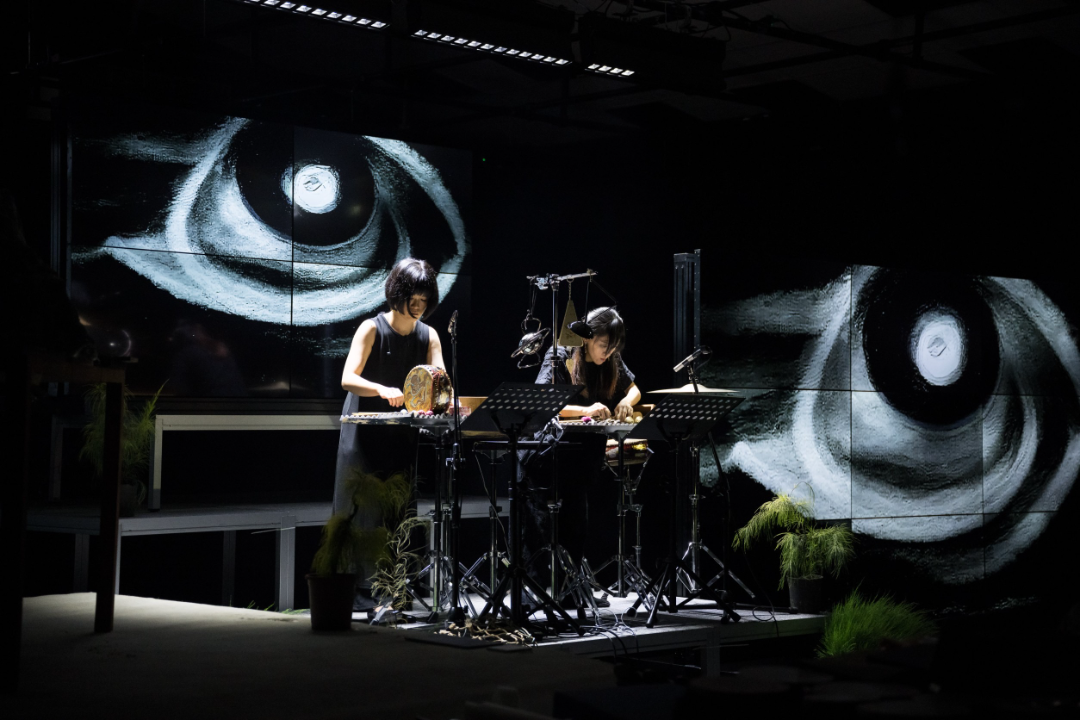
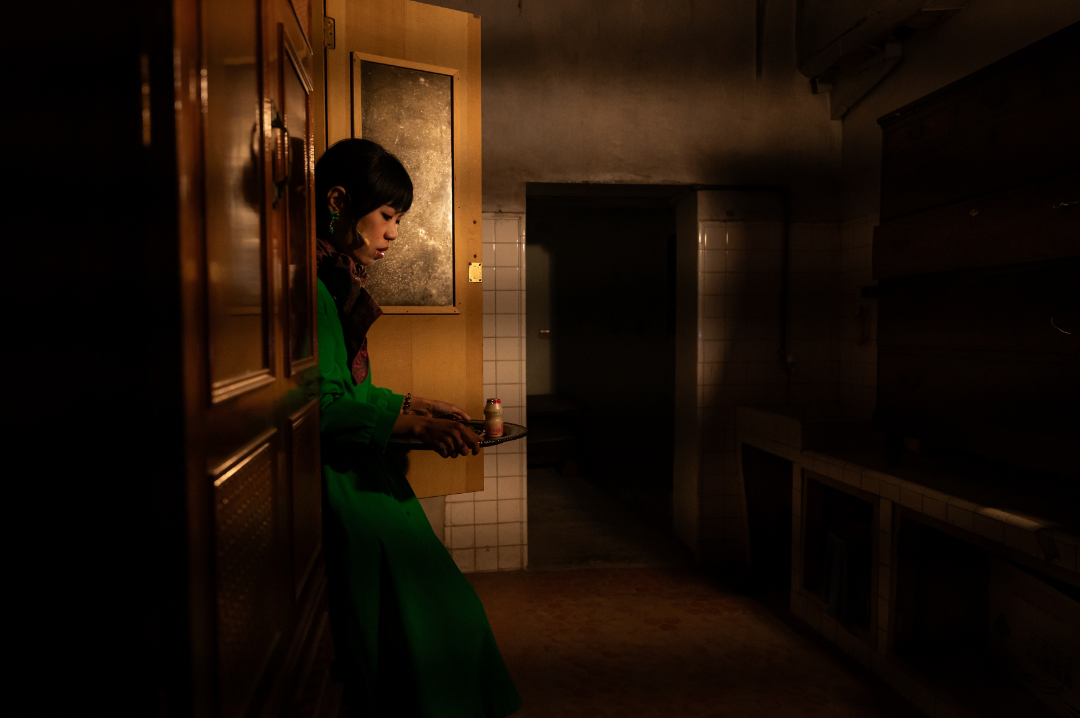
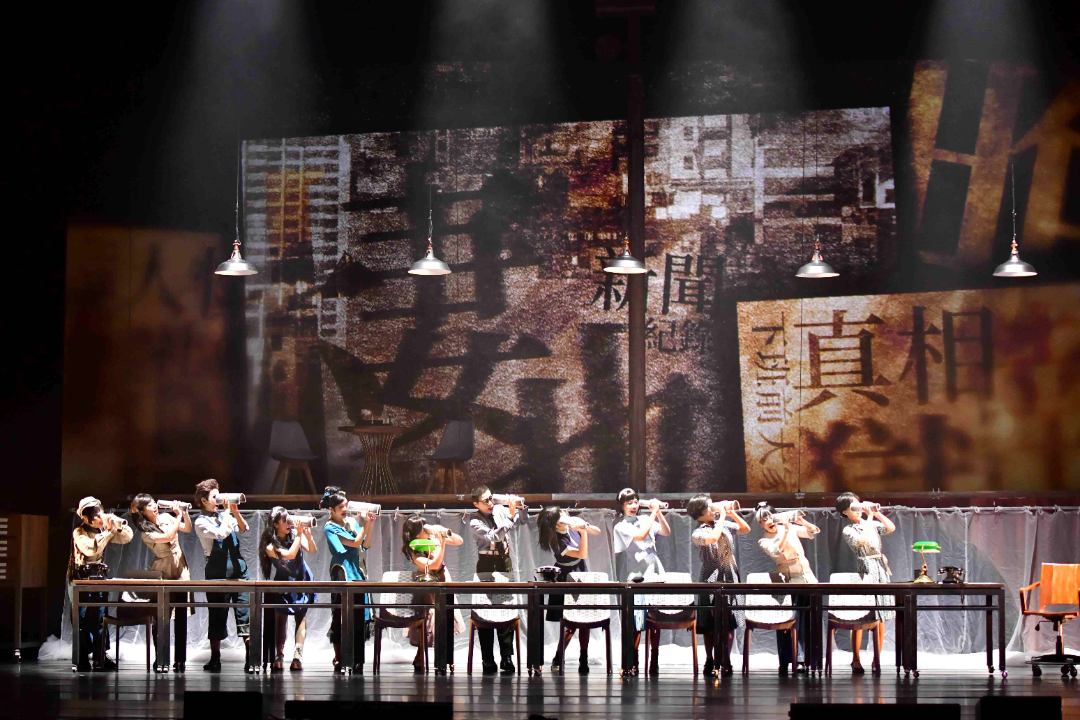
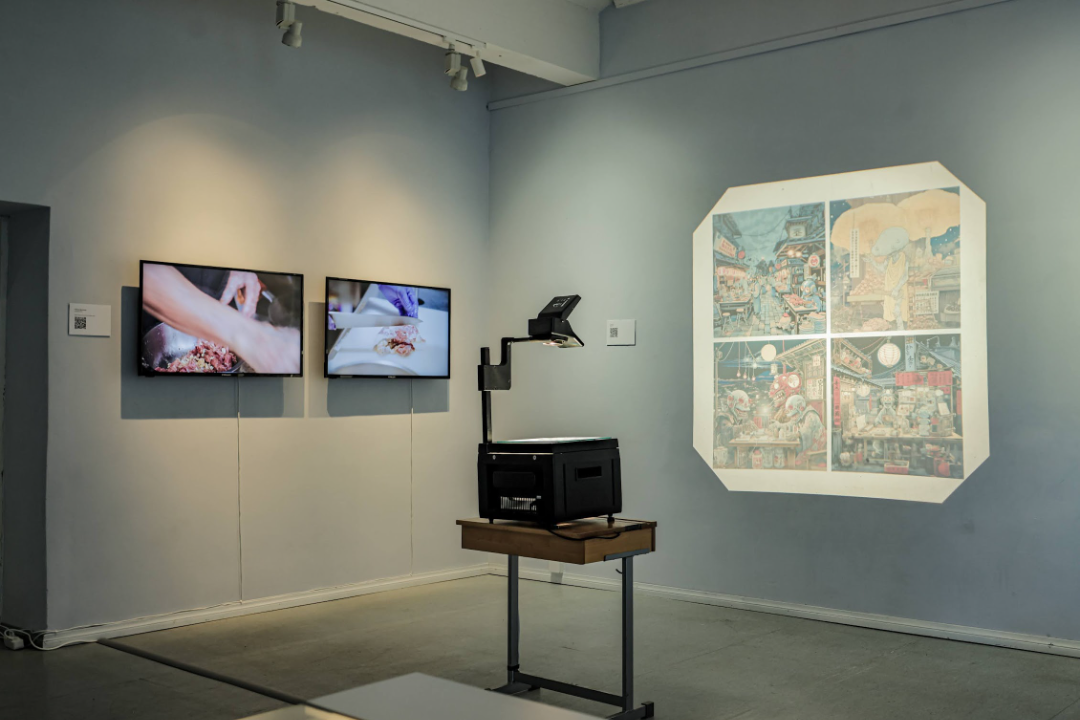

.jpg)
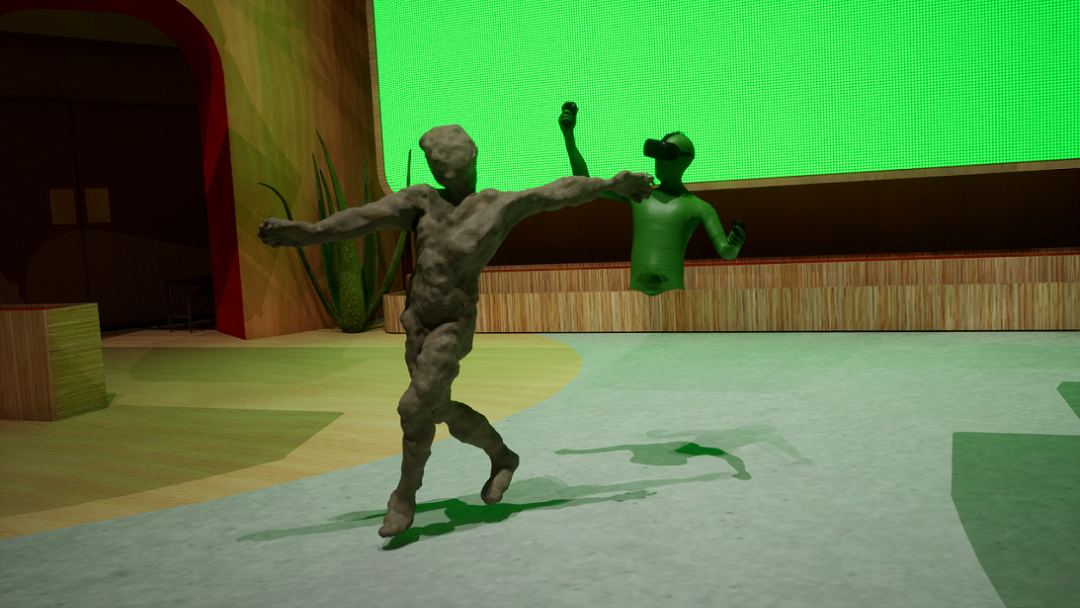
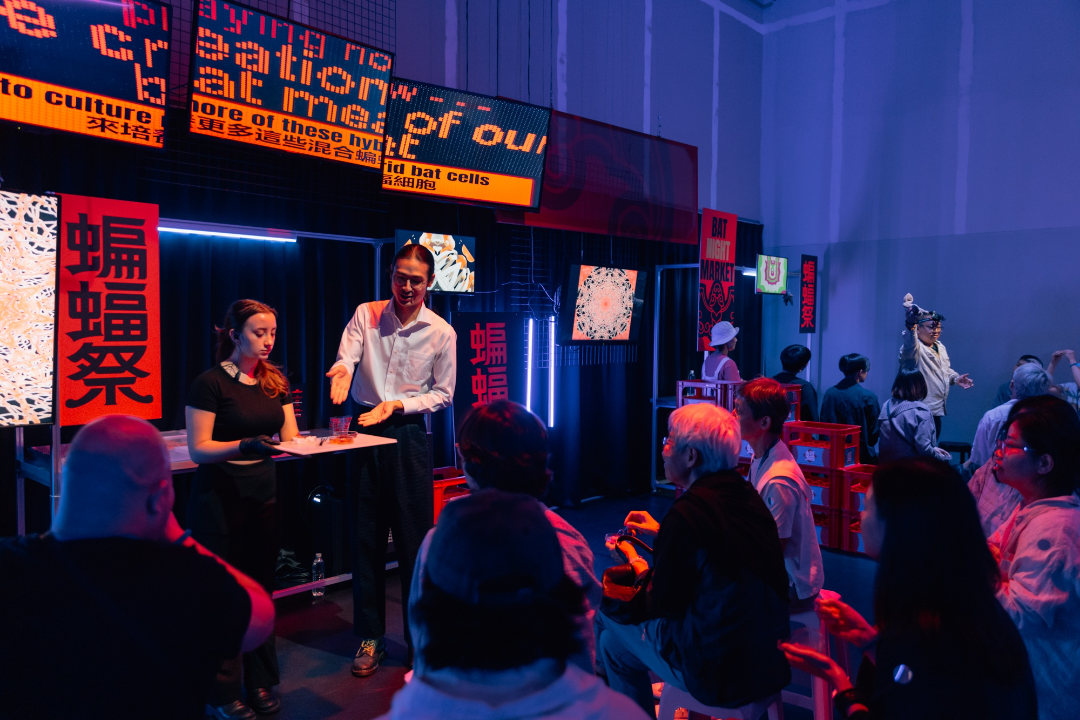
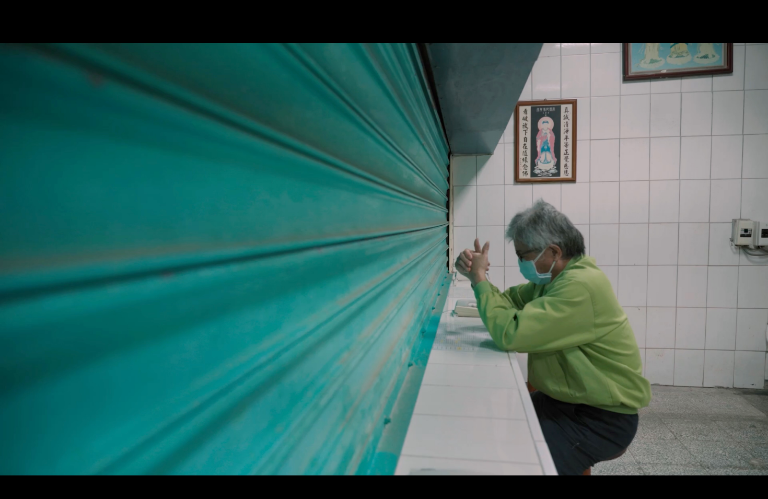
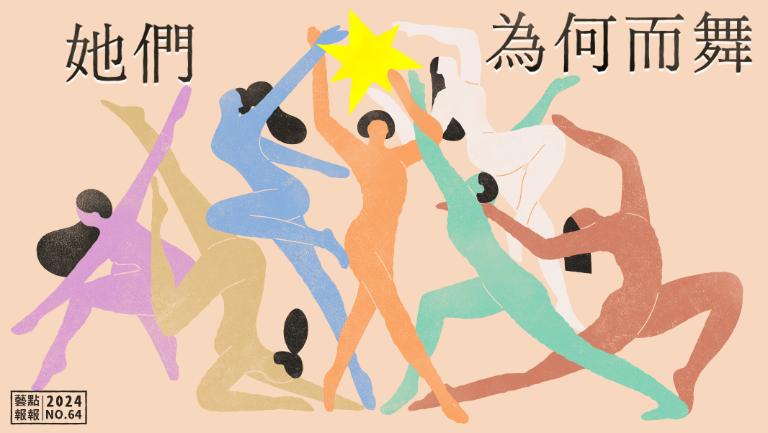
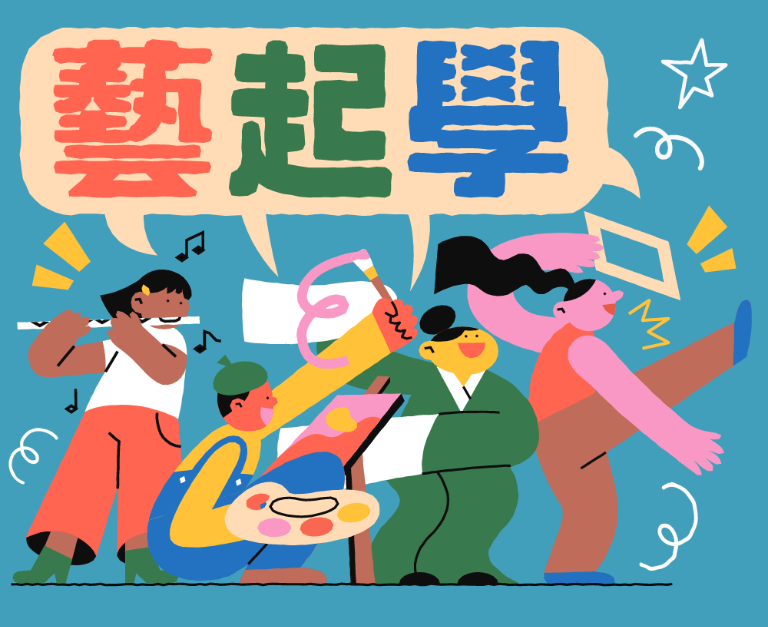
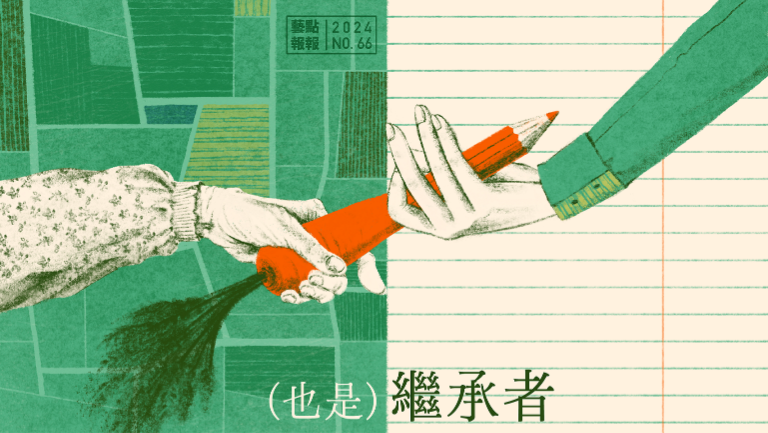
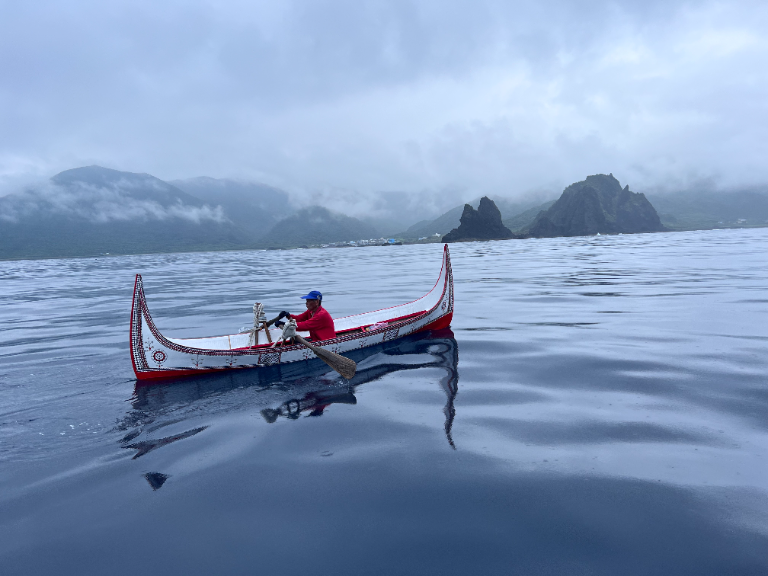
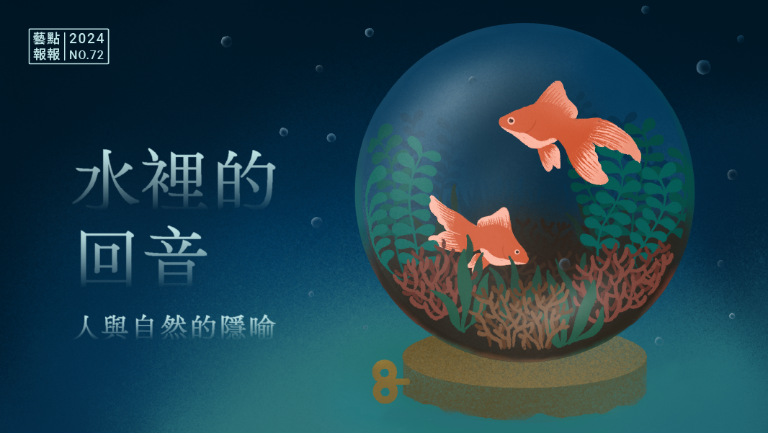

_1746004735209.jpg)

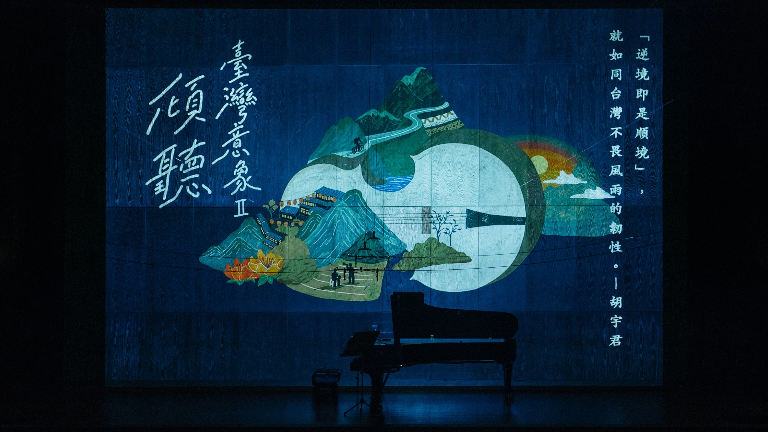
_1736490377300.jpg)
